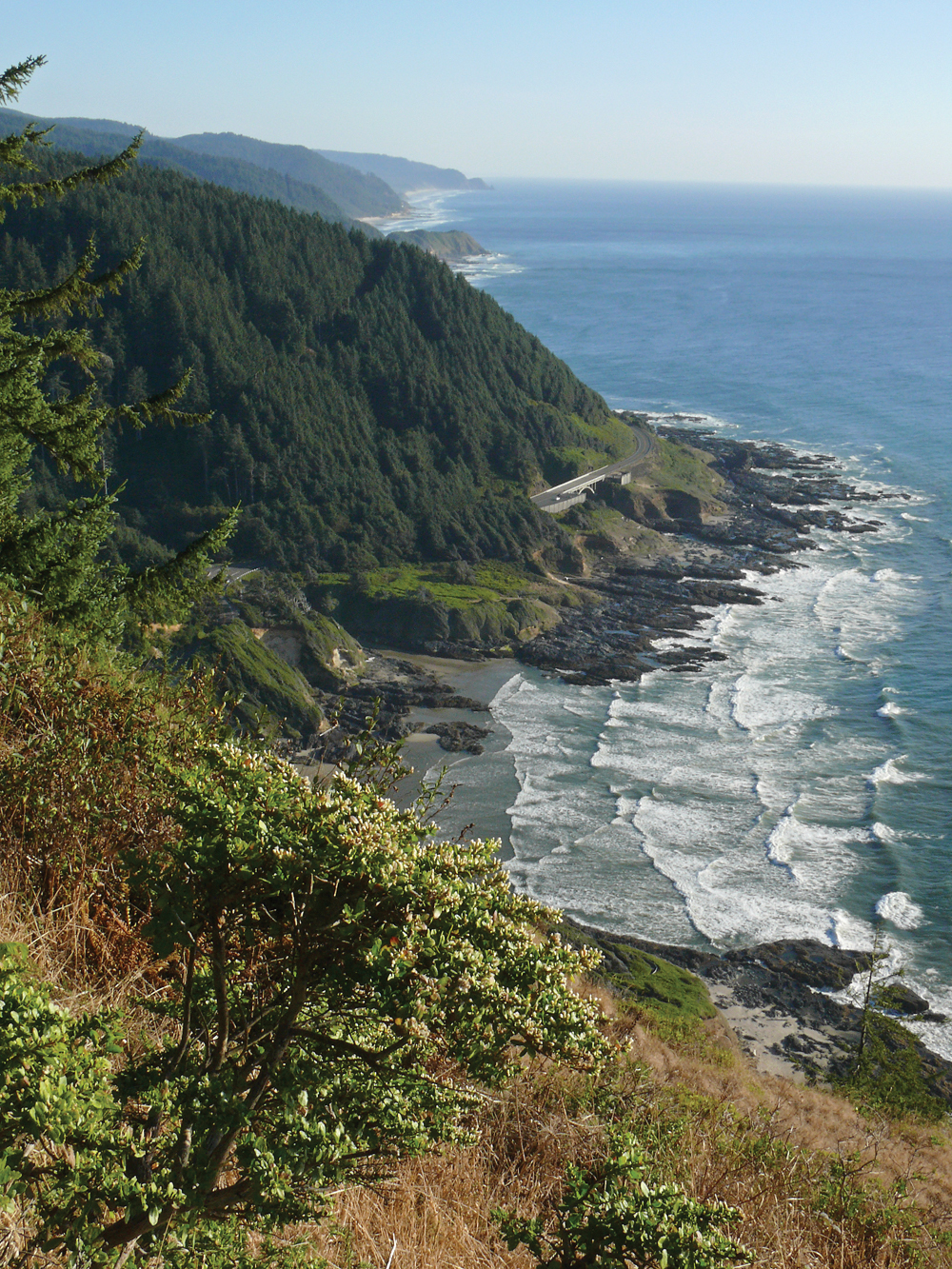WHEN BEAVERS BUILD DAMS, streams slow down, sediment accumulates and ponds grow. Meadows are born. Water nurtures new vegetation, a boon for wildlife and livestock.
But without beavers, streams speed up, scour channels and turn into gullies. Meadows dry out. Willows, sedges and other wetland vegetation give way to drought-tolerant shrubs.
At least that’s the theory. In the arid valleys of Eastern Oregon, Caroline Nash is learning that the truth may be a lot more complicated.
The Oregon State University Ph.D. student in Water Resources Engineering is testing the idea that beavers are key to restoring streams that have cut their way down into the soil and left their floodplain meadows high and dry. Hydrologists have a word for these channels: “incised.”
“Theories about incised streams been around in the scientific literature for over 100 years,” says Nash. “We have a pretty good idea about what causes this to happen in specific locations, but we don’t have a universal theory. There are so many reasons a creek can do this, and there are so many things that can happen when it does, depending on the climate and what the vegetation was when you started. There are a lot of factors.”
The story may actually start with the forces that created meadows in the first place. Fast-moving streams often splash and tumble over boulders and create spectacular landscapes along the way. “You typically see more erosion happening in headwater streams,” says Nash. “In meadows, erosion is stopping, and deposition is occurring. Why is that?”

The question isn’t just a hydrologic curiosity. Across the West, landowners and organizations interested in meadow restoration are taking cues from nature and installing artificial beaver dams on small streams. A team of federal and Portland State University scientists has even published The Beaver Restoration Guidebook to promote the practice. (A team of OSU-Cascades scientists and students are studying artificial beaver dams on the south fork of the Crooked River near Paulina.)
These structures are typically made of local materials: wood, rocks and clay. They stretch from bank to bank and raise water levels from a few inches to a foot or two. But there are regulatory hurdles. State law requires fish passage, although waivers can be granted. New rules for artificial beaver dams are under development by the Oregon Department of State Lands.

Working with Gordon Grant, hydrologist in the U.S. Forest Service and Oregon State’s College of Earth, Ocean, and Atmospheric Sciences, Nash is digging into the origins of a meadow in the floodplain of Cottonwood Creek on the Silvies Valley Ranch north of Burns. She wants to learn how long the meadow has been there, how it grew and whether beavers are necessary for long-term stability. And she is seeking permits to install artificial beaver dams to track the impact of such structures on meadow development in the animals’ absence.
Ice and Cattle
To collect data on when and where water is flowing, she is monitoring streamflow, groundwater and the weather. This tributary to the Silvies River is typical of an incised stream in ranch country but presents scientists with a difficult challenge. It practically dries up in the summer. In the winter, snow and ice can damage sensitive equipment. Nearby Seneca holds the record for the lowest temperature ever recorded in Oregon: minus 54 degrees Fahrenheit.

And then there are curious cattle. To measure streamflow, hydrologists often install weirs, small dams with a V-shaped opening through which water flows. The pond that backs up behind the weir becomes an irresistible attraction to thirsty livestock. That means monitoring equipment must be put behind a fence.
Solving these problems led Nash into an unexpected partnership with skilled laborers — the people who weld, drill wells, irrigate and maintain fences at the ranch. “There’s a lot of knowledge and brilliance among the people who do this for a living,” she says. “We had to come up with a way that is collaborative, practical, economic and still effective.”

Nash grew up in Connecticut and has learned about more than the science of stream monitoring. With support and encouragement from owner Scott Campbell, she and the Silvies Valley Ranch team have adapted the tools of the hydrology trade to the rigors of an arid, working landscape. “I’ve become a passionate proponent of working with professional field workers and tradesmen to design and install equipment,” she adds.
Fortunately, Nash is getting help from stream itself. That’s because as the water cuts down through the soil, it reveals ancient layers of sediment and leaves an exposed timeline that ticks off deposition over decades and centuries. One layer in particular — ash from the eruption of Mount Mazama that created Crater Lake more than 7,000 years ago — gives the researchers a starting point that is common in other meadows around the Northwest.
“Our goal is to look at the water and the geology and make our best professional judgment about why we think these meadows were here to begin with,” says Nash. “That leads us to what we think a responsible set of restoration strategies could be. Ultimately, if we can support landowners who want the ability to restore some of these creeks without costing the state a lot of money, that would be a really good thing.”
Nash hopes to complete her study in the spring of 2018.






1 Comment
Nash is simply one of the best at OSU – she designed, built, and operated this major facility as a PhD student, while being president of the Graduate Water Resources Club, writing papers on theoretical hydrology, and playing a central role in the intellectual community.
She deserves great thanks and recognition for her truly impressive contributions.
John Selker
Distinguished Professor, OSU